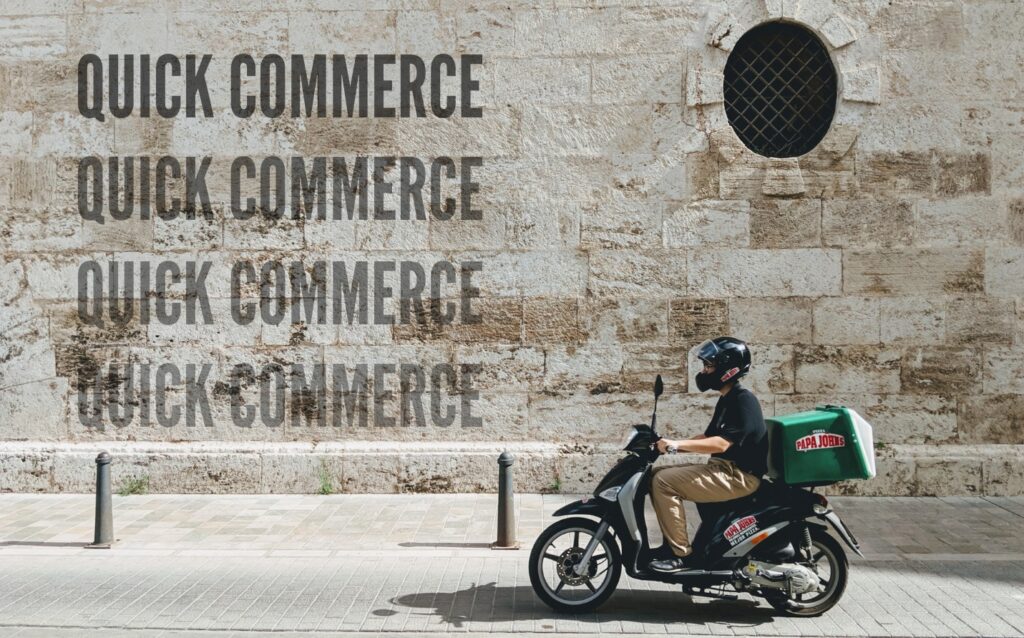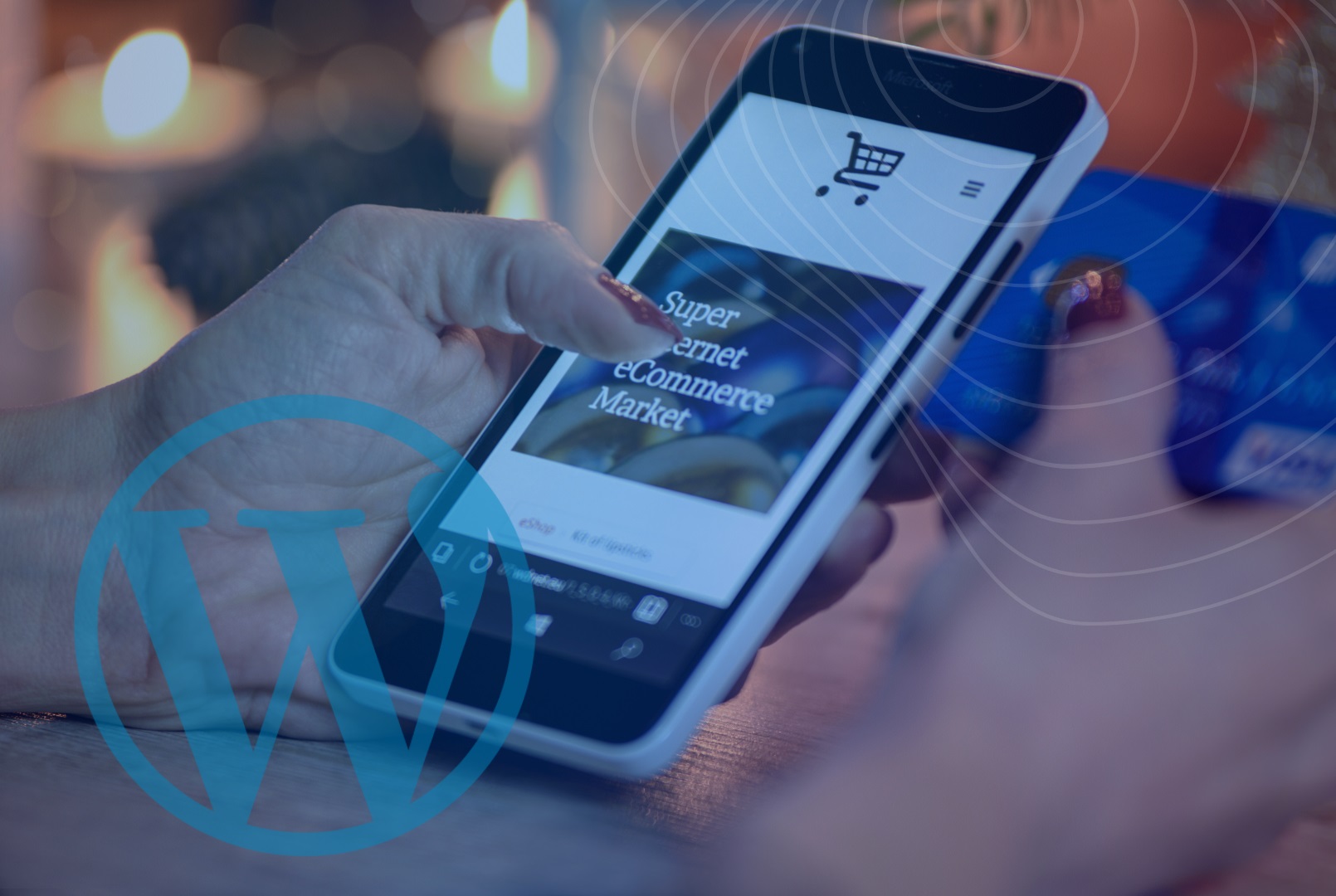The Q-commerce revolution: Speeding toward the future of retail
Efficiency and convenience have long been cherished by consumers worldwide. The pre-pandemic sentiment, underlined by a PwC study, revealed that 80% of US consumers considered these two factors as the essential ingredients of a positive customer experience. However, the global landscape underwent a profound transformation when the COVID-19 pandemic struck. Here is where Q commerce appeared.
In response to the crisis, consumers adapted swiftly to new technologies and habits, with 21% of US consumers opting for online grocery orders from nearby stores, according to the OECD. Surprisingly, even individuals aged 65 and above joined this digital shift. This surge continued into 2022, witnessing a remarkable 37% year-on-year increase in online grocery deliveries.
Furthermore, the last-mile delivery market for groceries, valued at approximately $25 billion in 2021, is poised to soar to an astounding $72 billion by 2025, as per research findings. The torchbearers of this evolving landscape are the brands that have embraced the Quick Commerce (Q-commerce) phenomenon, reaping the benefits of consumer behavioral shifts.
Here at Default Value, with our extensive experience in the e-commerce realm and a keen eye on emerging trends, we stand at the forefront of understanding and exploring the intricate world of Q-commerce. For example, we were developing a very interesting project for an online store of kosher products with unusual features. Join us as we delve deeper into the realm of Q commerce, a revolution driven by speed, and uncover its far-reaching implications on the future of retail.
What is Q-commerce?

Q-commerce is the lightning-fast evolution of e-commerce, where the need for speed takes center stage. In a world where convenience and immediacy reign supreme, Q-commerce steps up to the plate by promising swift deliveries, often within an astonishing one-hour timeframe. While it may appear to be a tight deadline, Q-commerce primarily caters to the realm of small, urgent orders rather than the weekly grocery haul. Picture this: you realize you’ve run out of a crucial ingredient for tonight’s dinner, or you urgently need a specific item that can’t wait. Q commerce steps in as your savior.
The mechanics behind this rapid service involve a well-oiled machine of online ordering systems, strategically located local warehouses, and nimble delivery teams often navigating the streets on two wheels. These elements work in synergy to ensure that your Q commerce order is not just placed quickly but also reaches your doorstep with unprecedented speed.
Although Q-commerce may seem like a revolutionary concept, it has quietly been part of the takeaway food industry for years. Think about those moments when you craved a piping hot pizza or your favorite cuisine, and it magically appeared at your door shortly after clicking “order.” Q-commerce takes this same principle and applies it to a broader spectrum of products, from everyday essentials to unique gifts and trendy apparel.
As e-commerce brands relentlessly strive to shorten delivery times, it was only a matter of time before consumers could enjoy this level of convenience for a wider array of goods.
Q-commerce vs. E-commerce
In the digital age, both Q-commerce and E-commerce have transformed the way we shop, offering unique advantages and catering to different consumer needs. Below, we’ll break down the key differences between these two modes of online commerce:
| Aspect | Q-Commerce | E-Commerce |
| Delivery Time | Typically within an hour or less. | Typically within a few hours. |
| Customer Experience | Provides a seamless and ultra-convenient experience. | Offers convenience but with slightly longer delivery times. |
| Technology | Utilizes quantum computing to power transactions. | Typically relies on conventional online shopping platforms. |
| Purchase Process | Allows customers to make purchases through conversational interfaces. | Customers visit a website or app to make purchases. |
| Delivery Speed | Delivers in minutes, with competition aiming for 30 minutes or less. | Delivers within 3-4 days, considered acceptable. |
| Operational Model | Some Q-commerce companies are marketplaces without physical stores or product stock. | E-commerce often involves maintaining warehouses and inventory. |
| Origin and Growth | Originated with food delivery and expanded into grocery, medicine, gifts, and apparel, among others. | Encompasses a wide range of products and services, with roots in online retail. |
While both Q-commerce and E-commerce have their unique strengths, the defining factor often boils down to time and convenience. Q commerce is the choice when you need goods almost instantly, while E-commerce provides a broader selection with slightly longer delivery windows. The evolution of these two modes continues to shape the way we shop in the modern world, catering to our ever-changing needs and expectations.
Advantages of Q-Commerce

With its unique set of advantages, Quick commerce is reshaping how we shop and meet our daily needs. Here are the key benefits that set Q-commerce apart from traditional retail:
- Speed: Q-commerce operates at lightning speed, delivering goods to customers in a fraction of the time compared to conventional retail outlets. Thanks to hyper-local micro-fulfillment centers, often referred to as “dark stores,” strategically positioned within densely populated urban areas, orders can be fulfilled approximately 25% faster than traditional in-store shopping. What are dark stores? A dark store is a type of retail outlet or distribution center that exists exclusively for online shopping. Couriers swiftly navigate between these dark stores and customers’ locations, ensuring swift deliveries.
- Guaranteed Availability: In the realm of Q-commerce, availability is not a concern. Advanced AI and real-time inventory management technologies ensure that products are readily available to meet customer demands. These intelligent systems monitor demand patterns and adjust inventory accordingly, making out-of-stock items a rarity.
- 24-Hour Operation: Dark stores, the backbone of Quick commerce, operate 24 hours a day, 365 days a year. Unlike brick-and-mortar retailers with fixed daily opening hours, Q-commerce stores are always ready to serve, catering to the “always-on” culture fostered by smartphones and modern technology.
- Ease: Convenience is the cornerstone of Q commerce’s value proposition. Imagine the choice between a traditional shopping journey involving travel, searching for items, queuing, and bagging, compared to simply opening an app and tapping a few buttons to place an order. Q-commerce offers customers an effortless shopping experience, especially appealing to those with limited time.
Advantages of Q-commerce for brands

Q-commerce isn’t just a boon for consumers; it offers significant advantages to brands and businesses as well:
- Competitive Edge: Q commerce provides businesses with a unique selling proposition (USP) that sets them apart from competitors. The promise of immediate delivery attracts customers who may be willing to try new products and shop from new stores. This convenience-driven model allows online retailers to compete with industry giants like Amazon and traditional brick-and-mortar stores.
- Increased Profit Margins: Q-commerce presents a lucrative opportunity for higher profit margins. During the pandemic, a significant number of shoppers were willing to pay extra for immediate fulfillment and convenience. Smaller product selections in Q-commerce stores also allow retailers to focus on promoting their most profitable items.
- Enhanced Customer Experience: Meeting and exceeding customer expectations is crucial in the modern retail landscape, and Quick commerce does just that. By addressing meaningful pain points, such as last-minute party preparation, forgotten gifts, or essential item restocking, Q-commerce creates satisfied and loyal customers. The ultimate customer experience fosters brand loyalty and long-term relationships.
In a world where time is precious and convenience reigns supreme, Quick commerce emerges as the answer to the evolving needs of both consumers and retailers.
Examples of Q-commerce: Redefining quick retail
Companies are racing to redefine retail by offering swift deliveries of groceries, household items, and other products within minutes. Here’s a glimpse of the exciting players in this dynamic Q-Commerce landscape:
- Gorillas: A trailblazer in Q-commerce, Gorillas delivers organic, local, and fresh produce right to people’s doorsteps. Their commitment to quality and speed has made them a household name in quick retail.
- Jokr: With a promise of lightning-fast deliveries, Jokr has carved a niche by bringing groceries, household essentials, and more to customers within an impressive 15-minute timeframe.
- Weezy: Weezy follows suit, ensuring that you never run out of groceries or household items with their rapid 15-minute delivery service. Convenience is their mantra.
- Getir: Getir takes it up a notch by delivering a wide range of products, from groceries to household items, in just 10 minutes. It’s all about delivering what you need precisely when you need it.
- Flink: Flink joins the race with a 10-minute delivery promise, catering to the diverse needs of customers with a quick and seamless shopping experience.
- Online Grocery Stores: Beyond dedicated Quick commerce platforms, even established online grocery stores have hopped on the speed wagon. They enable customers to purchase their necessities and have them delivered within an hour of placing an order.
- Cloud Stores: These innovative marketplaces offer an intriguing opportunity for market expansion. By opening virtual cloud stores, businesses can reach new audiences without the constraints of physical locations.
Unlocking the power of quick commerce: Implementation strategies

Here are three pivotal steps to kickstart your Q-commerce journey:
Establish Local Hubs:
Success in Q-commerce hinges on proximity to customers. Local warehouses and hubs strategically located in urban areas ensure swift deliveries. Utilize two-wheeled transport for efficient urban navigation, or collaborate with partners like Deliveroo and Uber Eats to extend your reach. Innovations like Alibaba’s ‘Fema’ stores redefine Quick commerce hubs with delivery times under 30 minutes.
Curate Your Q-commerce Stock:
Tailor your Q-commerce inventory to meet customer demands. Focus on popular categories like food, beverages, cosmetics, and everyday products. Include items such as gifts, medicines, office supplies, and electronics. Consider the preferences of aging consumers who may favor home delivery. Align your product selection with your target audience.
Deploy the Right Software:
Utilize robust software tools to maximize Q-commerce potential. Real-time inventory management systems enhance efficiency and accuracy. They prevent stockouts and excess inventory, reducing storage costs. Reporting tools for inventory monitoring give insights to optimize product offerings and enhance the customer experience.
Conclusions: The future of Q-commerce
The future of Quick commerce is bright. Driven by customer demand for convenience and speed, the industry is expected to grow significantly in the coming years.
Q-commerce is currently dominated by food delivery, but the industry is expected to expand to include other categories of items, such as electronics, personal care products, and home goods. This is because customers are increasingly looking for ways to get everything they need delivered quickly and easily.
As Q-commerce expands beyond food delivery, retailers will need to diversify their inventory to meet the needs of their customers. They may also need to invest in technology that can help them improve their inventory management, supply chain, and customer service.
The rise of dark stores is another trend that is expected to shape the future of Q-commerce. Dark stores are warehouses that are specifically designed for Q commerce. They are located in close proximity to customers, and they are stocked with a limited range of products that can be delivered quickly.
Despite the growth potential of Q commerce, the industry also faces some challenges. These challenges include inventory management, supply chain issues, and the need to maintain a high level of customer service.
At Default Value, we thrive on innovation and possess the expertise to turn even the most daring ideas in the realm of Q-commerce into tangible reality. Our team is dedicated to empowering businesses to navigate this evolving landscape, leveraging technology and consumer insights to unlock the full potential of Quick Commerce. Whether it’s streamlining operations, enhancing customer experiences, or revolutionizing delivery logistics, we are here to help transform your vision into actionable strategies. Let us be your partner in shaping the future of retail through Q-commerce innovation.




